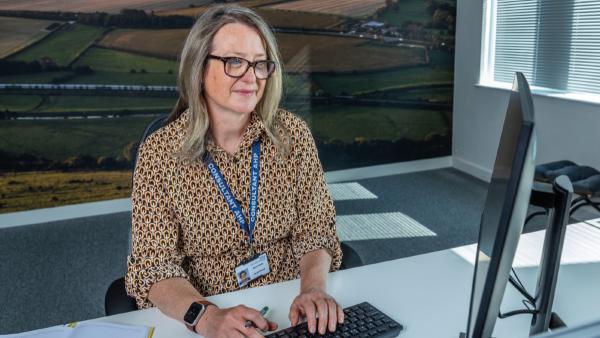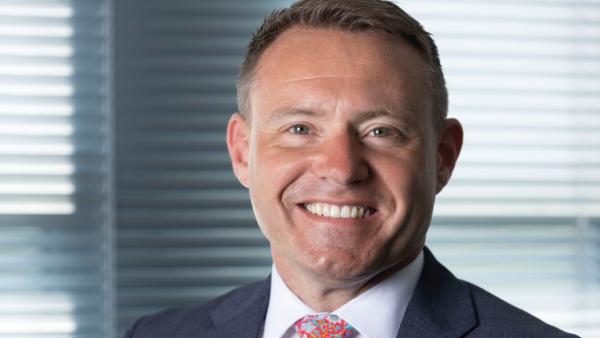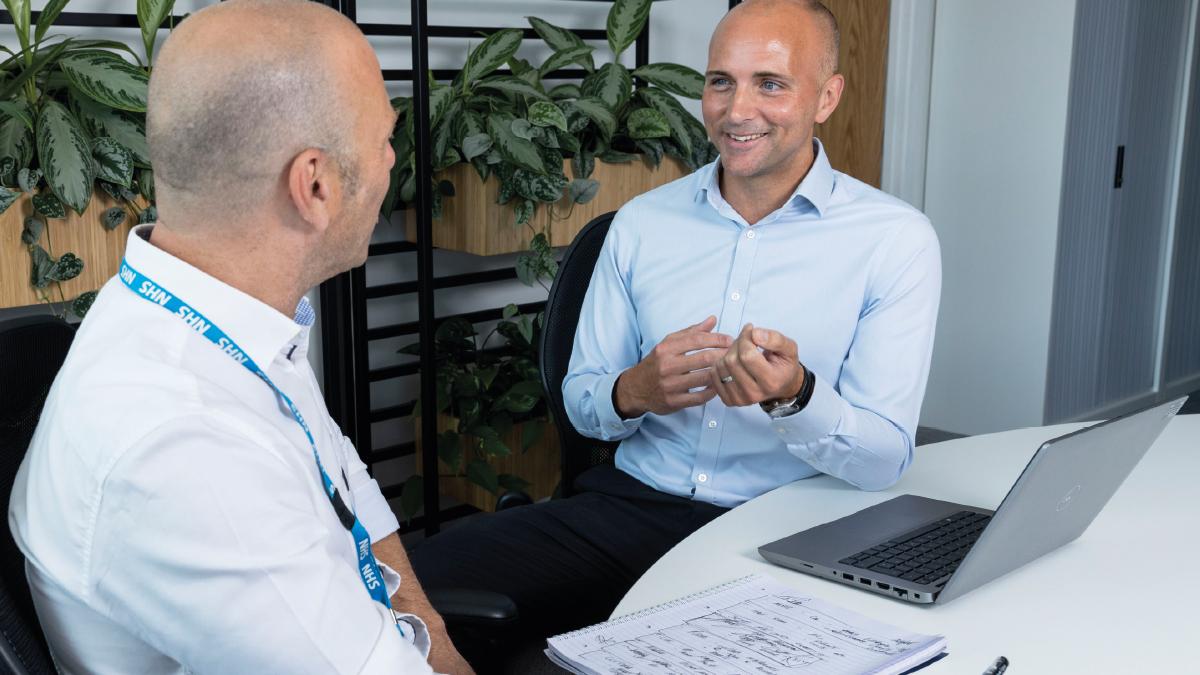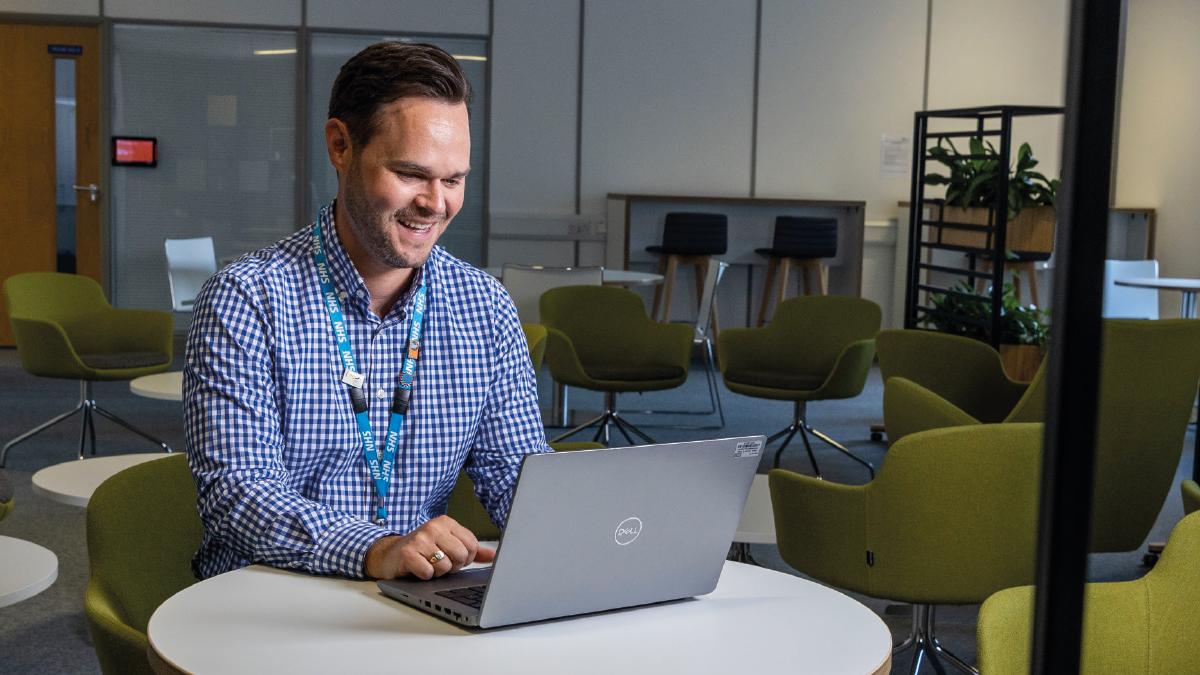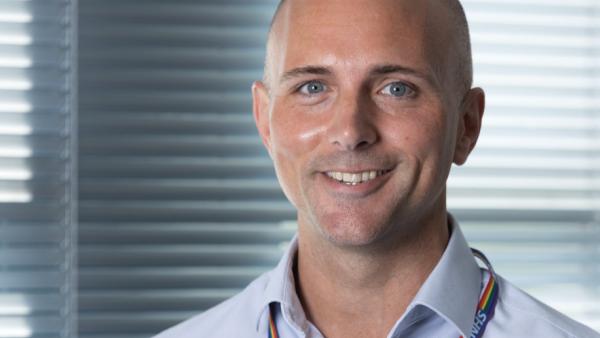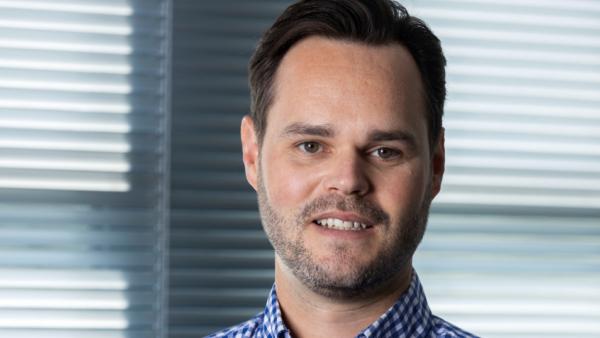As the first anniversary of integrated care boards (ICBs) approaches, Tamsin Starr talks to six physiotherapists who are leading a community rehabilitation revolution in Sussex, and finds out how breaking the mould brings the greatest rewards
ICBs were launched a year ago with big ambitions and no blueprint for success. Heralded as the model for better patient outcomes through earlier intervention and preventative care, early wins were eagerly scaled up NHS wide. Sussex soon emerged as one to watch, as it led the way in tackling health inequalities and transforming services.
A commitment to clinical leadership and a culture of innovation was widely tipped as the X factor in early ICB success. Sussex has both, perhaps in part due to the fact physiotherapists occupy leadership positions at every level within the Sussex system – from CEO Adam Doyle through to the board of directors and professional leads. It is no surprise then that when chief AHP for NHS England in the Southeast, Sara Bolton, pinpoints why Sussex is so ahead with its rehab transformation, its investment in the appropriate level of clinical and care professional leadership for allied health professionals is the first thing that springs to her mind.
We have a role as leaders to reduce discrimination and bias that we see in our actions and behaviours, whether that’s in patient care or in professional settings.
Sussex is leading the way in baselining and establishing a transformation programme – it has a shared delivery plan through 11 programme boards, each one with a clinical reference group that brings together system and clinical leaders and providers. Its models are now being used to drive improvements across the southeast.
‘Everybody has an equal voice and has a common voice,’ says Matthew Carr, clinical director at NHS Sussex.
‘And we can surface pockets of good practice and use this new collaborative working to roll out innovative and optimal approaches to health and care service delivery across the whole system.’
Sara adds that: ‘We’ve been using the work at Sussex to pump prime some of the scoping for rehabilitation work across the southeast.’
As for how to make this happen, consultant AHP for rehabilitation in Sussex, Karen Poole, calls having inspirational people with enthusiasm, interest and drive in the right roles ‘your first starting point’.
‘There were a number of us in Sussex who were really passionate about the rehabilitation transformation agenda, who’ve really been passionate to champion this, and you need those fertile grounds to start with,’ she says.
A collective accountability to make change happen sees it through, says Matthew, who has overseen the development of a single clinical service model for Sussex to eliminate variations in patient experience.
Adam’s reason for becoming a physiotherapist is a thread that ties together all his subsequent successes.
‘One of the reasons why I chose physiotherapy rather than medicine was because I got to work with people, work out what their problems were, what they will need to do to fix it, co-design that and implement the outcome with them,’ he explains.
‘I still use the same technique whether it’s a finance, governance or performance issue.’
A focus on personalised care
The physiotherapist mindset – fostered from working in a needs-based space – also equips leaders to look not only across teams, but across pathways according to Karen Poole, director of major trauma rehab, and clinical lead for stroke for the ICS, NHS Sussex, and a clinical lead in the Long Covid service for NHS Sussex. This results in services being redesigned in a way that focuses on personalised care.
‘Coming from integrated teams gives me a unique lens in being able to see across whole pathways,’ she explains.
‘From that vantage point we can begin to look at the data, start to understand our population and where those opportunities are for us to work in a different, smarter, proactive way.
‘We started to build a lot around understanding, segmentation or stratification. We needed to make better use of our resources,’ Karen explains, citing historic underfunding of community rehab.
‘The basic work that we did with stratification now underpins NHS England’s optimising inpatient and community pathways,’ she says, which is outlined on the NHS Futures website.
Sussex is the trailblazer in ICB adoption of the community rehabilitation best practice standards. This is often cited as a key factor behind their success.
Adam argues their agile approach to integration is equally important, with clinical leadership as a multi-professional piece across health and care.
‘Our overall strategy is about integrating community teams, where they’re underpinned by one workforce and a digital solution, bringing together clinical professionals at the heart of it,’ he says.
Data is key to giving everyone the same high-quality care, looking at individual needs on a population level and delivering it in a seamless way as ‘one NHS’.
Adam gives an example of data exposing factors behind why a group of over-75s arrive in hospital on a Sunday.
A shared care home residence could point to the need for more prevention work.
‘What we’re aiming to do is give all our AHPs and our wider professional groups that information to say what isn’t working, where you’re at. And what community model do we change,’ he explains.
‘If we get it right, we will see a movement of resources from institutions into communities.’
This is less a move of financial resources, and more a move of people, he stresses, with healthcare professionals spending some or all of a week currently spent on a hospital ward in the community instead.
As set out in the community rehabilitation best practice standards, such early, comprehensive, biopsychosocial assessment and co-ordination of care based on information sharing results in a clear patient journey.
Linking health and social care in a way that creates a seamless patient journey has required investment – but it’s starting to pay off.
‘It’s been fantastic in terms of how we start to join up between primary care, advanced practice, first contact practice through to our community services, and then with the primary care, personalised care role,’ says Anne Canby, strategic AHP workforce lead at Sussex Health and Care Partnership.
‘We’re really starting to ensure that for patients, there’s an improved and streamlined journey, where we’re able to help meet their needs, wherever they are in the system. I like to think of it in terms of “No wrong door”.’
It’s clear that Sussex’s leaders have been given the support, space and confidence to pause and reset old assumptions, abandon old ways of working and drive a significant cultural shift.
‘We’re trying to deconstruct traditional medicalised models, and put services in the community,’ Adam explains.
‘The reason that’s important is with rehabilitation, you’re getting somebody back to where they want to be and where we can get them.’
Achieving the ‘impossible’
Three phases of rehabilitation transformation are already under Karen’s belt at Sussex – intermediate care, community rehabilitation, and restoring and recovery of services post-Covid. Work on the acute phase of rehab transformation is next.
‘We’ve had a single narrative, we’ve kept up momentum, and we’ve looked for the cracks and worked out where we can influence with that,’ she explains of these achievements.
There is a formula for designing ‘responsive rehabilitation’ services, which she calls the six-pillar journey. It aims to take the successes of stroke
rehab and apply them across all pathways.
‘At its heart, it is about looking with curiosity at the opportunities in your service,’ she says.
This all starts with understanding your population beyond the single condition, and the demographics.
‘We need to look more collectively at our data to be able to describe those populations – how complex are they? How dependent are they? What’s their social risk, what’s their frailty like. It impacts capacity and demand and what our opportunities are,’ Karen explains.
Data is the life force of integrated care at Sussex, with digital innovation fund investment driving real-time patient dashboards across community MSK services at five different providers.
Matthew says the secret to winning buy-in to the dashboard was ‘so much listening’ and synthesising all their needs and drivers into options that won consensus.
Pillar two is to take that understanding and translate it into what needs you must deliver. In the case of the MSK dashboard, services can track and close health inequalities using consistent demographics and patient outcomes at 12, 18 and 24 weeks. The next phase is an automated stratification tool.
The third pillar is about understanding and measuring your performance. Look for your pinch points, areas of strength and those for improvement and pinpoint any gaps. The aim should be to shift from criteria and diagnostic led services to a needs-based approach (pillar four).
‘When we move away from a diagnosis, we then have an opportunity to look at responsive rehabilitation,’ Karen says.
She adds that workforce design comes next: ‘Start to look with curiosity about what those workforce opportunities could be within registered, non-registered, but also with the community support part, and our infrastructure.
‘So social prescribers, community link workers, you know, things that are outside of health. What does that workforce model look like?’
The last pillar is providing the opportunity and access to lifelong support. Karen adds a caveat: ‘Okay, so that doesn’t mean that our teams are going to continue to see them lifelong, but it is about making sure that we’ve got some really mature structures to be able to allow access and re-access for patients back to services or support at the time it is right for them.’
The six pillars have now been endorsed as a model across health and social care in Sussex.
Tips on influencing
Physiotherapists are all well placed to push community rehab higher up the agenda of ICB/ICS priorities according to Matthew:
They have enhanced emotional intelligence skills that allow them to understand how to position challenges and arguments and opportunities to different stakeholders in a way that’s likely to land best.
Making the argument to the right people in their own language is key, Karen adds.
‘We needed to step away from our rehabilitation personas, where we like to get into detail, and describe complexities because we lose people on that journey,’ she advises.
This and sheer persistence in promoting your compelling narrative for change will win over stakeholders, she explains. ‘Work hard making that compelling argument to colleagues about why we need to shift and transform.
‘I probably spend 50 per cent of my working week having that conversation with people in different multiple ways,’ Karen smiles.
Starting your transforming journey
Be confident, be bold and connect, because no one can achieve change alone seems to be the consensus among Sussex’s key players when it comes to achieving change.
Small-scale pilots can lead to big-scale change, Stuart argues, citing the example of physiotherapist Lucy Cassidy’s award-winning virtual fracture clinic at Brighton and Sussex University Trust.
Karen explains more about setting the conditions for transformation in a CSP vlog, using the community rehab best practice standards as a lever for change in an explanatory video and cites the influencing toolkit and the iCSP influencers network as another great resource.
Dealing with imposter syndrome
You can get in your own way on your leadership journey, and it’s a problem experienced by everyone interviewed here at some point in their career. The trick is to overcome it.
‘Impostor syndrome, or a concern about being the right person to lead, creeps in for everybody, says Anne, who divides her tactics for overcoming it into two.
‘One is to work with others on improvement programmes,’ she says.
‘In Sussex, we have our allied health professionals faculty and our council which support and develop allied health professionals, aligning what the organisation needs with what we’re doing at system level. So, there are lots of opportunities for people to, in a supported way, start to get involved in quality improvement.’
The second, she says, is coaching and mentoring. ‘They provide a level of support that is outside of your normal line management route. So, you get the opportunity to focus much more on some of the barriers that you face. And you have somebody who may think very differently who will help you explore different avenues, and different opportunities to improve not just your competence and your skills, but also your confidence in leading and managing change.’
Find a mentor
Stuart applied for his first mentor through the CSP’s free mentoring scheme.
‘I can remember looking for and finding someone in a role that I aspired to be in, someone who I thought would challenge me to reflect, and ask the ‘right’ questions,’ he says.
‘It’s so valuable to get insight and perspectives from others, who have been on the journey. The questioning, curious approach is so important.’
Matthew adds that: ‘Mentorship really enabled me to really focus on what are the components of a leadership role that I really enjoy and focus my efforts around them.’ Stuart has some specific strategies to deal with a sudden loss of confidence, most likely to strike when he’s in a room full of ‘very important people’.
‘You’ve got to ground yourself in the moment. You’ve got to reframe that in the moment, ask yourself, “Why am I here?” and answer that, “Well, I’m here because I deserve to be”.’
He adds that a snippet of mindfulness can also work wonders. ‘I close my eyes and try and just take myself away from the moment, take a few deep breaths, and then bring myself to being fully active in, and owning the moment.’
Being upfront about our lapses in confidence provides a lesson for everyone, Anne believes. ‘It’s really important to be open about the challenges, that in our experiences we haven’t planned every step to leadership – I’ve had a wiggly journey.
‘And also to be honest when there are wobbly days, so that people know that that’s okay, and that doesn’t make you not a good leader.’
The future for physiotherapy leadership
Thinking back to how many physiotherapists Sussex’s senior team saw in leadership roles when they first qualified (none, mostly), it seems there has been a seismic change.
‘The development of integrated care systems is creating that environment where leaders will be drawn from all aspects of the healthcare network,’ Matthew says.
The emphasis on community rehab makes this especially attractive for physiotherapists. As Adam says, ‘When it comes to rehab, we will see a real, significant rise in people needing rehabilitative services, both as part of their care pathway, but also quite a huge preventative rehab to getting people to live, really healthy, fulfilled lives.’
What we’re aiming to do is give all our AHPs and our wider professional groups information to say what isn’t working, where you’re at. And what community model do we change. If we get it right, we will see a movement of resources from institutions into communities. Adam Doyle
Now is a time rich in chances to join up service thinking, and to think creatively about service design, with new foundations in critical thinking based on horizon scanning, and achieving best practice at scale, according to Anne.
‘What we have now is we have areas that are really growing and accelerating in terms of how many people feel they have a leadership role,’ she says.
‘I would like all physiotherapy workers to see themselves as leaders, wherever they are in their physiotherapy journey,” she says of her hopes for the profession.
‘There is going to be a big growth and focus on community services that better demonstrate how they help to keep people well, and help to keep them in a place where all of their health and wellbeing needs are met, doing the absolute utmost to keep them out of hospital.’
Achieving a meaningful end to health inequalities is another area where Matthew sees physios leading the way.
‘If you think about how physios have already embraced personalised health care, stratification of care – needs based assessment where we deliver the right level of health and care services to the right patients’ needs. What we have already demonstrated puts us in a really strong place to drive some of those priorities forward,’ he enthuses.
‘As well as the expansion of services within primary care. Look at the impact first contact practitioners are having within primary care and how they’re able to influence improved primary care experience for patients.
‘We’re in a really, really exciting time with a lot of opportunities for emerging leaders to drive change on the horizon.’
Leadership is for everyone
When it comes to getting yourself in the space to influence, physiotherapists have a head start. ‘Physiotherapists come with a unique skill set that is really transferable to leadership requirements – they are problem solvers,’ encourages Matthew.
And although Sussex shows what can be achieved when physiotherapists are at the top table advocating for community rehab, ‘leadership is part of every role,’ says Sara.
Every CSP member can begin their leadership journey today by helping get the best out of those around them.
‘Wherever you can find the opportunity to influence, to share your passion for your profession, to advocate for the outcomes for the people and populations that you serve, then that’s leadership,’ she encourages.
Tap into that passion to drive you, but try not to think of leadership as a ‘linear progression’. Sara views it as a skill set that can be pieced together like a jigsaw through seizing opportunities – be it volunteering, representing at meetings or cross-team working.
‘You’ve got to take leaps of faith,’ Stuart adds.
As well as advocating for personalised care, Sara believes leadership is about making the NHS a place that works better for patients and professionals.
‘We have a role as leaders to reduce discrimination and bias that we see in our actions and behaviours, whether that’s in patient care or in professional settings.’
The importance of evidence
Having evidence is key, says chief AHP and director of All-Age Continuing Care (AACC) for Sussex Stuart Palma. He admits that commissioners can, at times, be ‘hard to access’ but he says that: ‘Something that gets your attention as a commissioner is when you get
groundswell of movement; that swell of people that are not only articulating the gap or need, but providing clear evidence, and bringing tangible solutions.
‘To transform your service, it needs evidence – what’s the issue, what’s the gap, what transformation is needed/required, what are the solutions. Crucially, what will the impact and outcomes for our people and populations be – how will it contribute to the system priorities, improving access or tackling health inequalities, for example. And really importantly, what are the risks of not doing it?’
The community rehabilitation best practice standards offer a framework to make your case, and tools that can help.
The transformation of rehabilitation can also be linked to delivery of the NHS’s urgent and emergency care recovery plan, Sara suggests.
Don’t put too much pressure on yourself, advises Matthew.
‘People will have lots of different life challenges so take the time to think about what is within your gift to influence. Look for those opportunities and people will see that you are the one who is proactively looking at things you can improve, despite everything else that’s going on. That will put you on a really good road to demonstrating your abilities to lead and demonstrating your abilities to influence change.’
Number of subscribers: 3






































